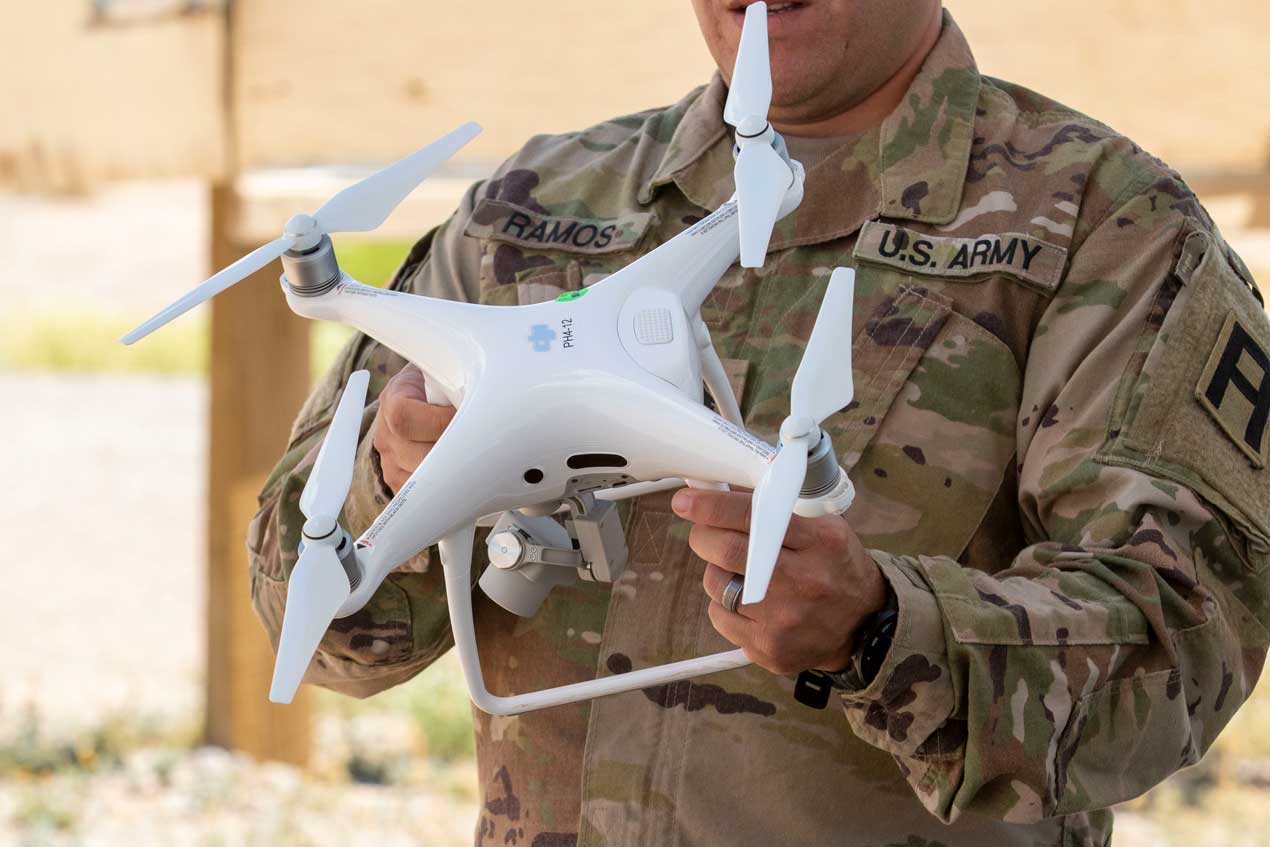Counter-Drone Capability for RAF Bases
Leonardo to work with RAF to evaluate technologies for a future counter-UAS system.
11 September 2019

The Royal Air Force will work with Leonardo to evaluate a range of technologies that could form a future counter-drone capability to protect RAF bases. The three-year R&D programme, announced at DSEI 2019 in London, will start in early 2020.
Leonardo says elements of its counter unmanned air system (C-UAS) technology were deployed by the RAF this year and in 2019 following drone sightings at Gatwick and Heathrow airports. The company has also provided C-UAS technology to the Italian Army and Air Force.
Its Falcon Shield C-UAS system uses specialised radar and 360-degree electronic surveillance to detect and track UAS threats. Falcon draws on the company's expertise in areas such as electro optical (EO) sensors and advanced Radio Frequency (RF) effector technology.
The RAF's C-UAS research programme will draw on Leonardo's experience of working with military and civilian customers to counter threats posed by drones.
In addition to the threat posed by hostile drones, Leonardo and Thales have been contracted by the UK Ministry of Defence to deliver an integrated Defensive Aids System to protect the RAF's fleet of Shadow R1 intelligence-gathering aircraft against threats from heat-seeking missiles. Eight of the RAF's Shadow aircraft will be fitted with the DAS which is made up of various subsystems from the two OEMs, including a threat warner and a directed infrared countermeasure.
Leonardo says recent trials in Sweden saw an integrated Miysis/Elix-IR system from Leonardo and Thales use a jamming waveform developed by the UK's Defence Science and Technology Laboratory to defeat infrared missiles in live fire exercises.
At DSEI in London, Leonardo also launched its latest infrared camera, SLX-Superhawk. Previously it wasn't possible to use an infrared camera for persistent surveillance, but Leonardo says it has developed a new cooling engine that allows the camera to operate for 40,000 hours, four times that of the average medium-wave infrared thermal imaging camera.
It also unveiled its latest jamming technology for ground forces to protect against IED threats. The new Guardian HR delivers “high-powered, targeted jamming across the threat spectrum, and Guardian High Frequency Extension (HFE) is an upgrade to the already in-service Guardian H3.